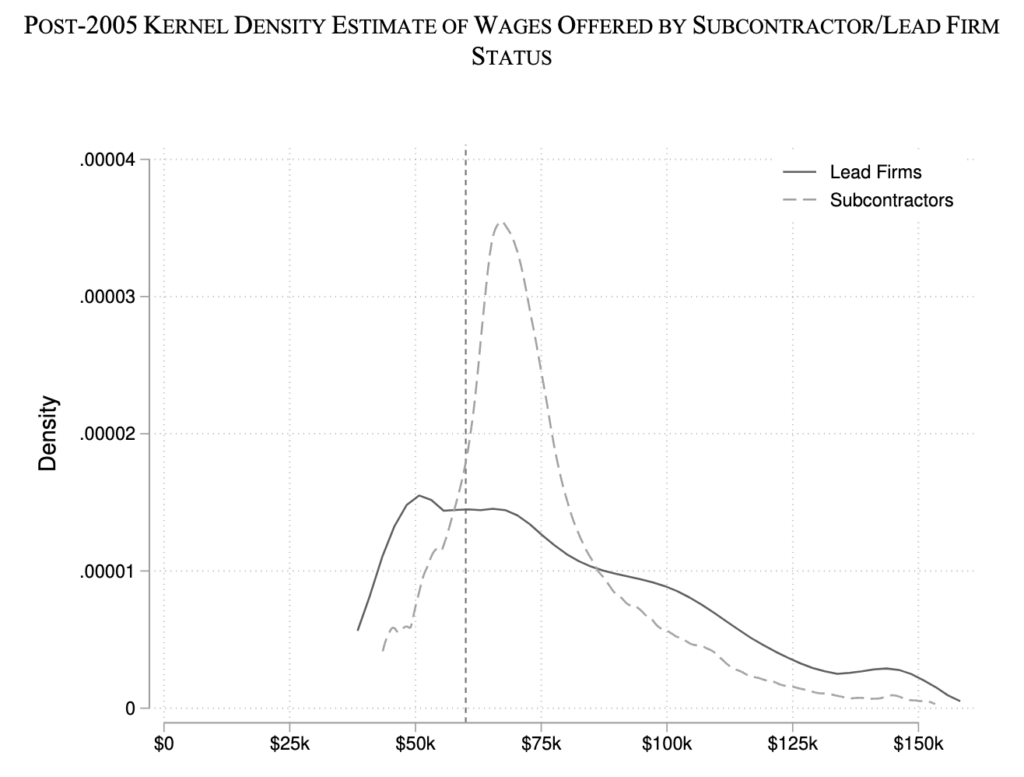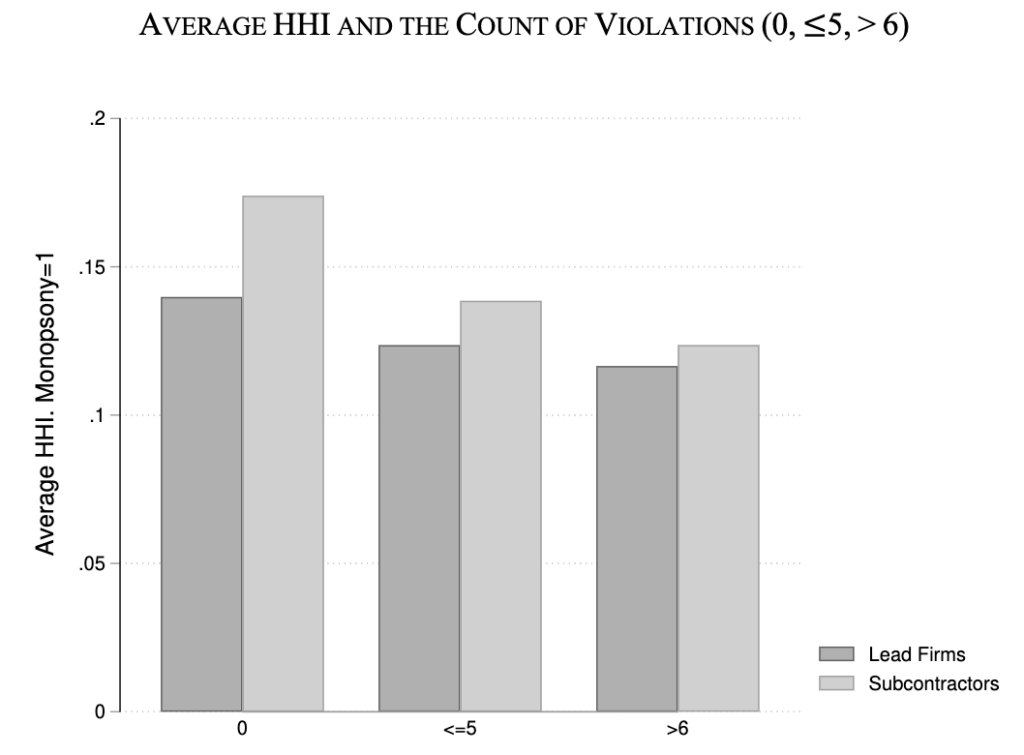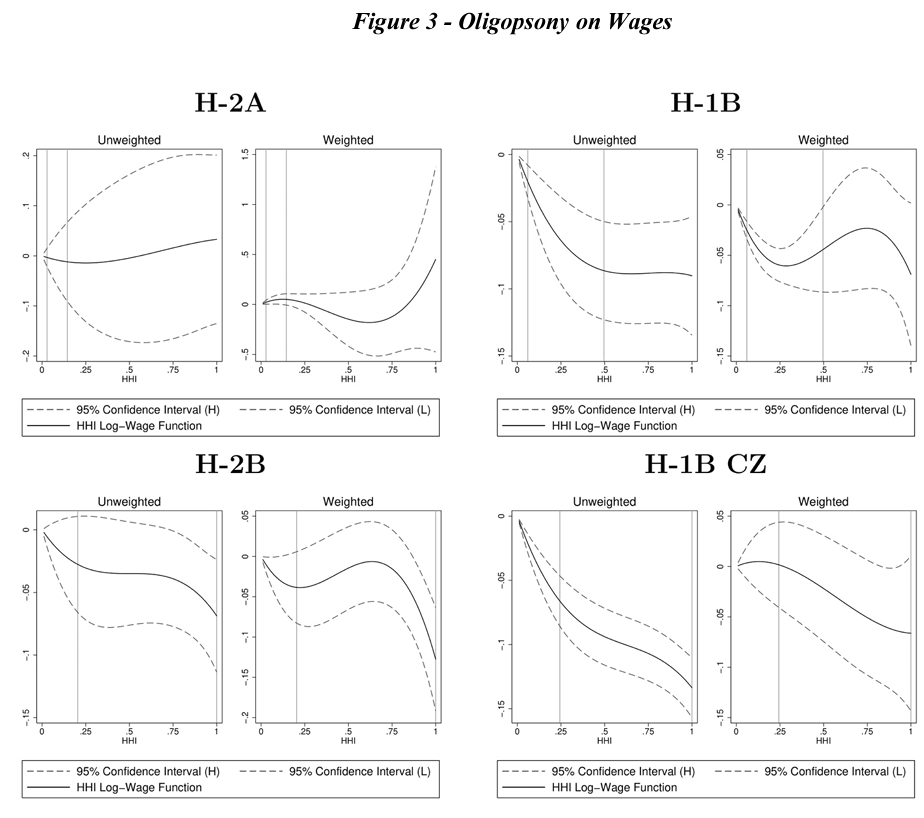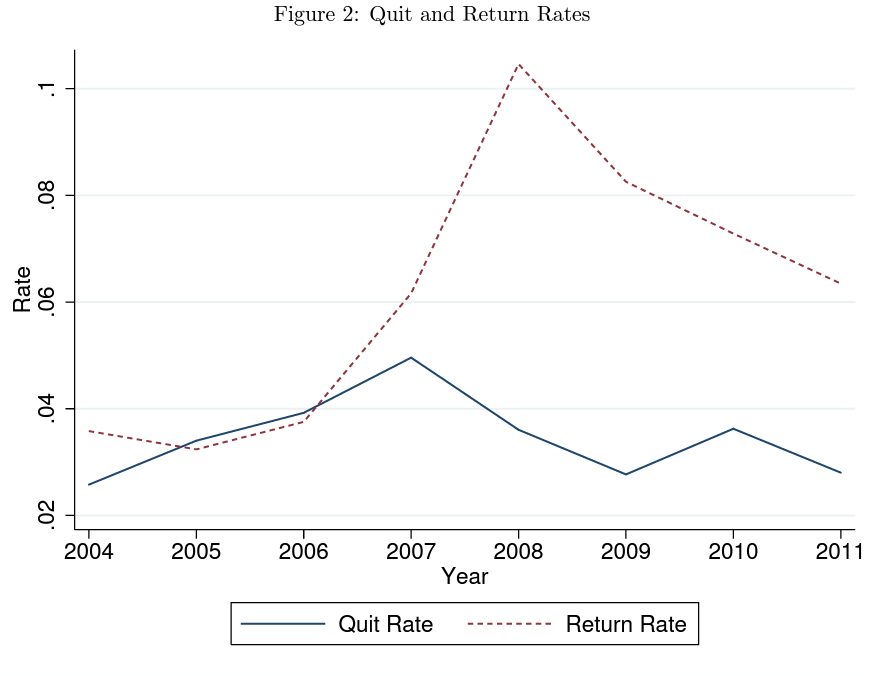Workers are keenly attuned to power imbalances at work, and many intuitively sense that an excess of employer power creates disharmony, inequalities, and injustices. Yet in management and business, it is often said that if something isn’t measured, it can’t be improved. When it comes to power imbalances between an employer and an employee, social scientists across disciplines have long felt that firms hold power over workers. Focusing in on a context I know well, I ask:
- How can independent observers know an employer has power over workers, how much power does an employer have, and what are the wage and working conditions effects of that power?
Monopsony Power and Wage and Hour Violations
Wage Theft, Market Power, and Outsourcing: The Case of H-1B Workers
Wage violations against H-1B visa holders (i.e., cutting their wages below a legally required prevailing wage) is analyzed theoretically and empirically. The theoretical model suggests that violations are more likely when firms have less labor market power, and in subcontractor firms that have been outsourced work. New empirical evidence supports these predictions, revealing that 60% of firms with at least one violation are subcontractors and that the incidence of violations is 40-65% less likely in a monopsony versus a competitive market. The results have implications for how scarce monitoring resources could be prioritized to minimize violations against guest workers.
DeVaro, Jed and Norlander, Peter, Wage Theft, Market Power, and Outsourcing: The Case of H-1B Workers (February 9, 2022). Available at SSRN: https://ssrn.com/abstract=3858061 or http://dx.doi.org/10.2139/ssrn.3858061


Guest Worker Programs
Do guest worker programs give firms too much power?
Guest worker programs allow migrants to work abroad legally, and offer benefits to workers, firms, and nations. Guest workers are typically authorized to work only in specific labor markets, and are sponsored by, and must work for, a specific firm, making it difficult for guest workers to switch employers. Critics argue that the programs harm host country citizens and permanent residents (“existing workers”), and allow employers to exploit and abuse vulnerable foreign-born workers. Labor market institutions, competitive pressures, and firm strategy contribute to the effects of migration that occur through guest worker programs.
Norlander, P. (2021). Do guest worker programs give firms too much power? IZA World of Labor. https://wol.iza.org/articles/do-guest-worker-programs-give-firms-too-much-power
Monopsony Power, Wages, and Limits on the Use of Firm Power
Monopsony Power and Guest Worker Programs.
Guest workers on visas in the United States may be unable to quit bad employers due to barriers to mobility and a lack of labor market competition. Using H-1B, H-2A, and H-2B program data, we calculate the concentration of employers in geographically defined labor markets within occupations. We find that many guest workers face moderately or highly concentrated labor markets, based on federal merger scrutiny guidelines, and that concentration generally decreases wages. For example, moving from a market with a Herfindahl-Hirschman Index of zero to a market comprised of two employers lowers H-1B worker wages approximately 10%, and a pure monopsony (one employer) reduces wages by 13%. A simulation shows that wages under pure monopsony could be 47% lower, suggesting that employers do not use the full extent of their monopsony power. Enforcing wage regulations and decreasing barriers to mobility may better address issues of exploitation than antitrust scrutiny alone.
Gibbons, E., Greenman, A., Norlander, P., and Sorensen, T. (2019). Monopsony Power and Guest Worker Programs. Antitrust Bulletin, 64: 540-565. https://doi.org/10.1177%2F0003603X19875040. (Working Paper Version; Equitable Growth Write-Up).

Inter-Firm Mobility and Return Migration Patterns of Skilled Guest Workers
Two concerns central to the debate over skilled guest worker programs in the USA are that (1) guest workers are restricted from inter-firm mobility and are “effectively tied” to their firms, and (2) guest workers provide cheap and immobile labor that crowds out natives, especially during times of heightened unemployment. We address these concerns by using a unique dataset of employee records from six large Indian IT firms operating in the USA. We find that the guest workers in our sample exhibit a significant amount of inter-firm mobility that varies over both the earnings distribution and the business cycle. We also find that these workers exit the USA during periods of heightened unemployment. These findings provide new evidence on the implications of the institutional features and debate surrounding guest worker programs.
Depew, B., Norlander, P., Sorensen, T. Inter-Firm Mobility and Return Migration Patterns of Skilled Guest Workers. Journal of Population Economics. (Working Paper Version)

Monopsony Background
In the economics literature, labor markets are often modeled as competitive: workers’ wages are set by a market, and are equal to their productivity. In the 1930s, Joan Robinson modeled employer power to set wages, and coined the term monopsony to refer to the condition where firms hold market power over workers. A key insight is that factors that make it challenging for employees to quit bad employers give employers power. Since the publication of Alan Manning’s Monopsony in Motion, there has been a revival of interest in monopsony, and the emergence of a large empirical literature that measures firm power to suppress wages, and the gap between worker’s income and potential income. Labor markets characterized by power imbalances depress workers’ wages and working conditions, and offer an explanation for discrimination on the basis of national origin, race, gender, and other categories.
